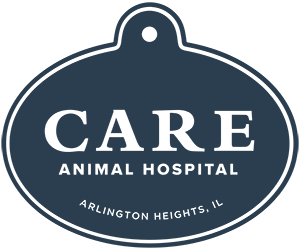CT Scan

Advanced Imaging with Computed Tomography (CT Scans) at Care Animal Hospital
At Care Animal Hospital in Arlington Heights, IL, we are proud to offer state-of-the-art Computed Tomography (CT) imaging to support accurate, efficient diagnosis and treatment planning for a wide range of conditions in pets. CT technology represents a major advancement in veterinary diagnostics, enabling our team to visualize detailed internal structures that traditional radiographs often cannot capture.
What Is a CT Scan?
A CT scan (short for Computed Tomography and sometimes referred to as a “Cat Scan”) is an advanced diagnostic tool that produces high-resolution, cross-sectional images of your pet’s body in both 2D and 3D formats. Unlike standard x-rays, which provide a single flat image, CT scanning captures a series of x-rays taken from multiple angles while rotating rapidly around the patient. These images are then reconstructed by a computer to form a highly detailed, three-dimensional view.
This technology allows us to identify abnormalities with exceptional precision—often detecting issues that would otherwise remain hidden on conventional radiographs.
Clinical Benefits of CT Imaging
CT scans are a powerful tool for diagnosing and evaluating a wide variety of health concerns, particularly those involving hard-to-reach or complex anatomical regions. This includes the central nervous system, nasal cavities and sinuses, chest, abdominal region, and there are many orthopedic applications.
Why Choose CT Imaging at Care Animal Hospital?
- Minimally invasive with rapid image acquisition
- Safe and pet-friendly protocols for anesthesia and monitoring
- Enables early detection and precise treatment planning
- 3D visualization gives unparalleled insights into complex cases
- Essential for advanced surgical and orthopedic procedures
Our veterinary team leverages CT imaging as part of our comprehensive diagnostic approach, ensuring we provide the most accurate information to guide your pet’s care. Whether we’re investigating a chronic condition or preparing for surgery, this technology allows us to make informed decisions that improve outcomes and quality of life.
Schedule a Consultation
If your pet is experiencing unexplained symptoms or has been referred for advanced imaging, Care Animal Hospital is here to help. Our compassionate team will walk you through the process, explain findings clearly, and design a customized care plan based on the most accurate diagnostics available. Call us today to schedule a consultation or ask your veterinarian about a referral for a CT scan at Care Animal Hospital in Arlington Heights.

